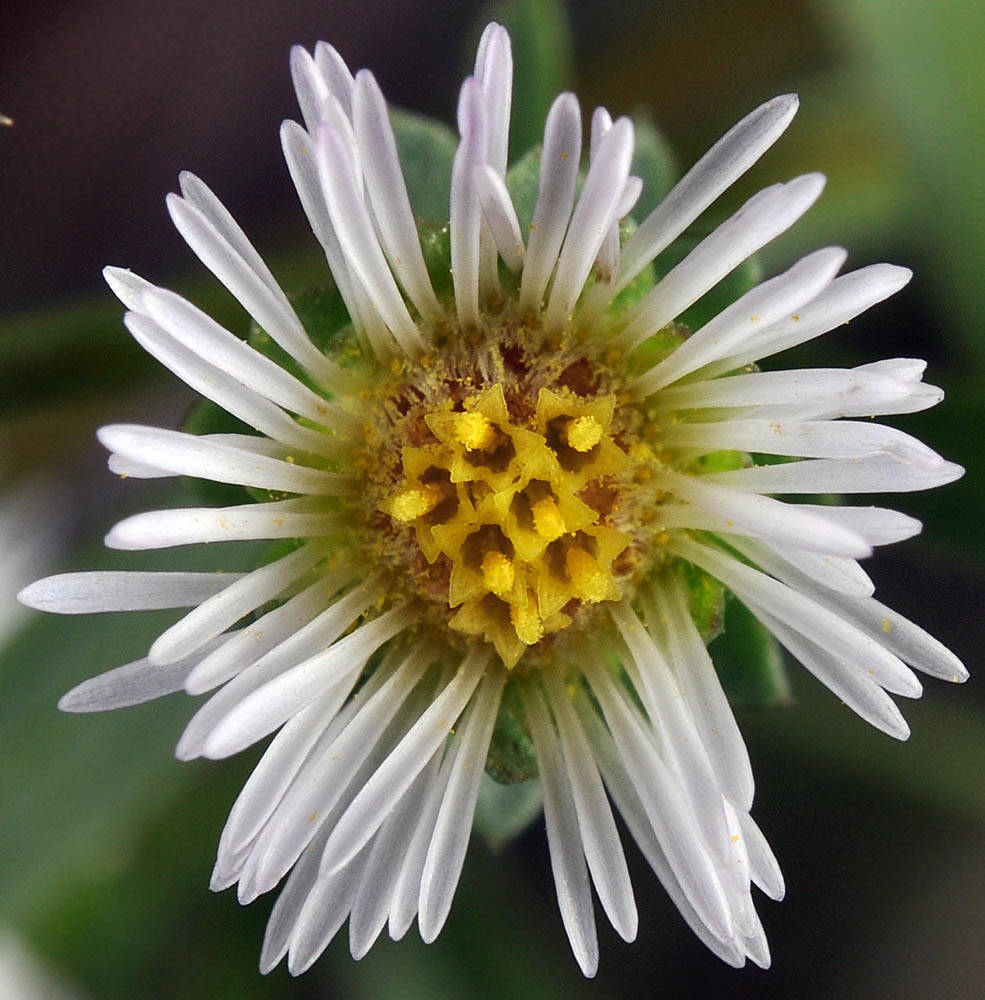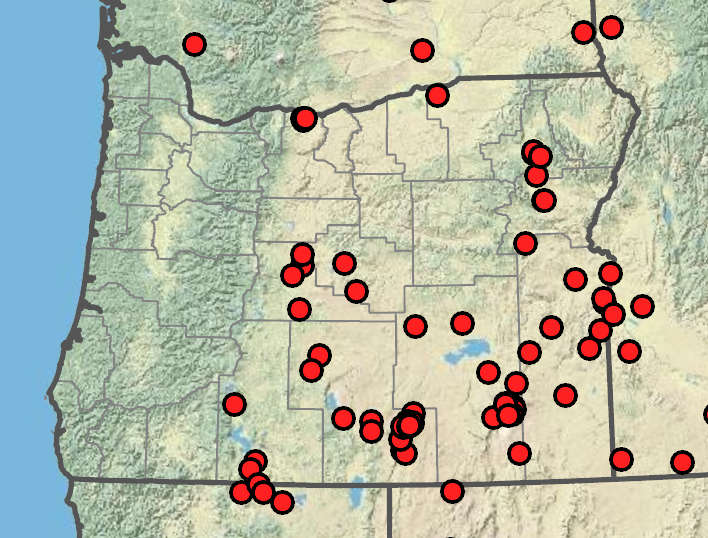Symphyotrichum subulatum
Symphyotrichum frondosum
alkali aster, short-rayed aster
decumbent to erect;
surfaces glabrous.
margins entire to serrulate;
tips acute to obtuse;
surfaces glabrous;
basal withering by flowering, oblanceolate to spatulate, 2–12 cm, petiolate;
cauline lower withering by flowering, linear to oblanceolate, 1–8 cm, sessile.
narrow; ± crowded; panicle-like arrays.
5–9 mm.
90–110;
rays 1–2 mm, barely exceeding the disc florets; pinkish white to purplish white.
in 3–4 subequal to unequal series; ± spreading, oblong to oblanceolate or obovate, bases scarious-margined;
tips green;
surfaces glabrous.
strigillose;
pappus bristles 6–7.5 mm, white to yellowish.
numerous.
=14.
Symphyotrichum subulatum
Symphyotrichum frondosum
Marshes, lake edges. Flowering Jun–Oct. 50–1600 m. BR, BW, Col, ECas, Lava, Owy. CA, ID, NV, WA; north to British Columbia, northeast to Alberta, east to WY, southeast to NM. Native.
Geraldine Allen
- Local floras:
BC,
CA,
OR,
WA
- Local Web sites:
CalFlora,
CalPhotos,
Flora NW,
PNW Herbaria
WildflowerSearch
iNaturalist (observations)
USDA Plants Database
- LBJ Wildflower Center
- SEINet
- Plants of the World Online
- Encyclopedia of Life
- Wikipedia
- Google Image Search



